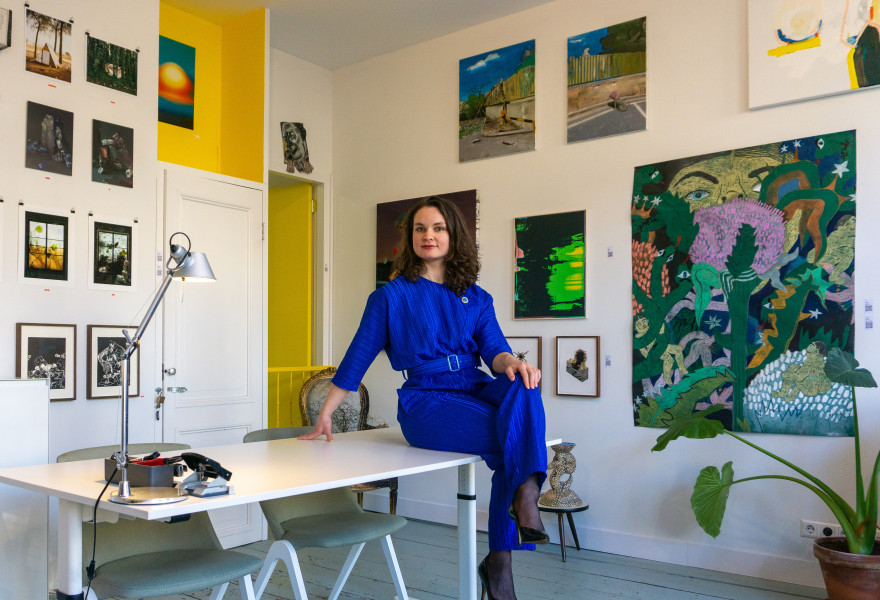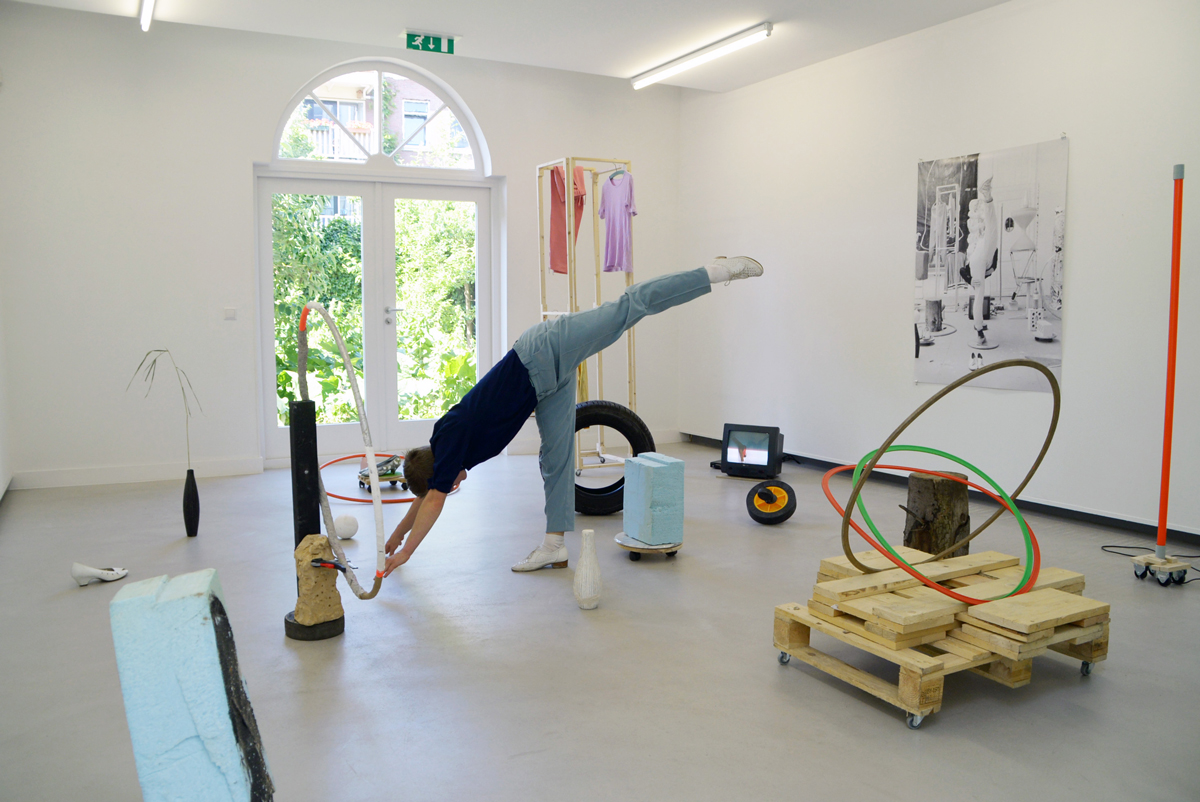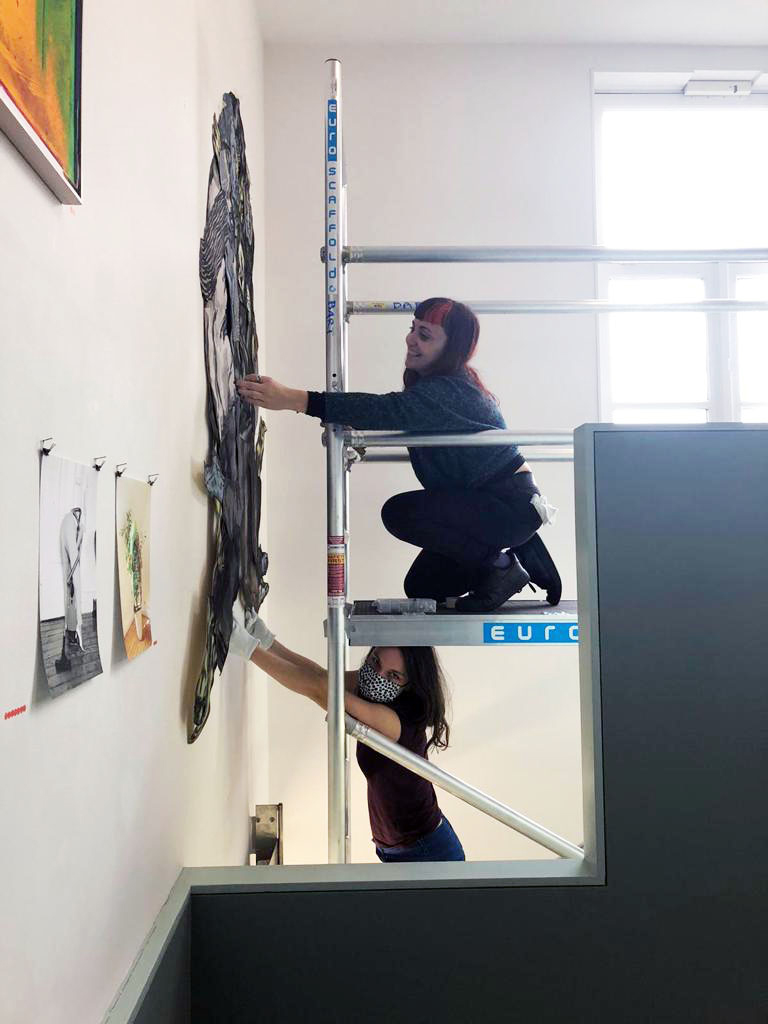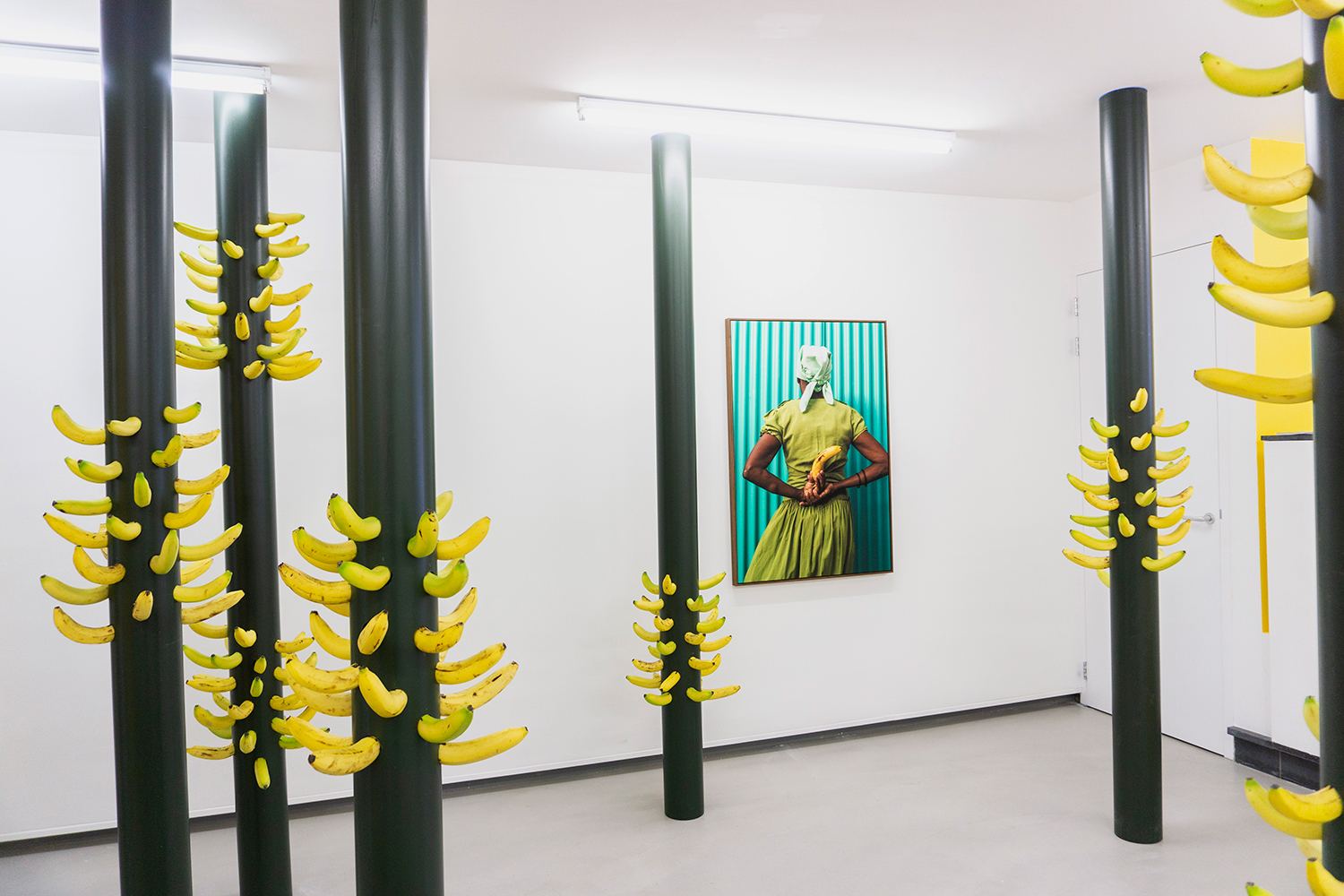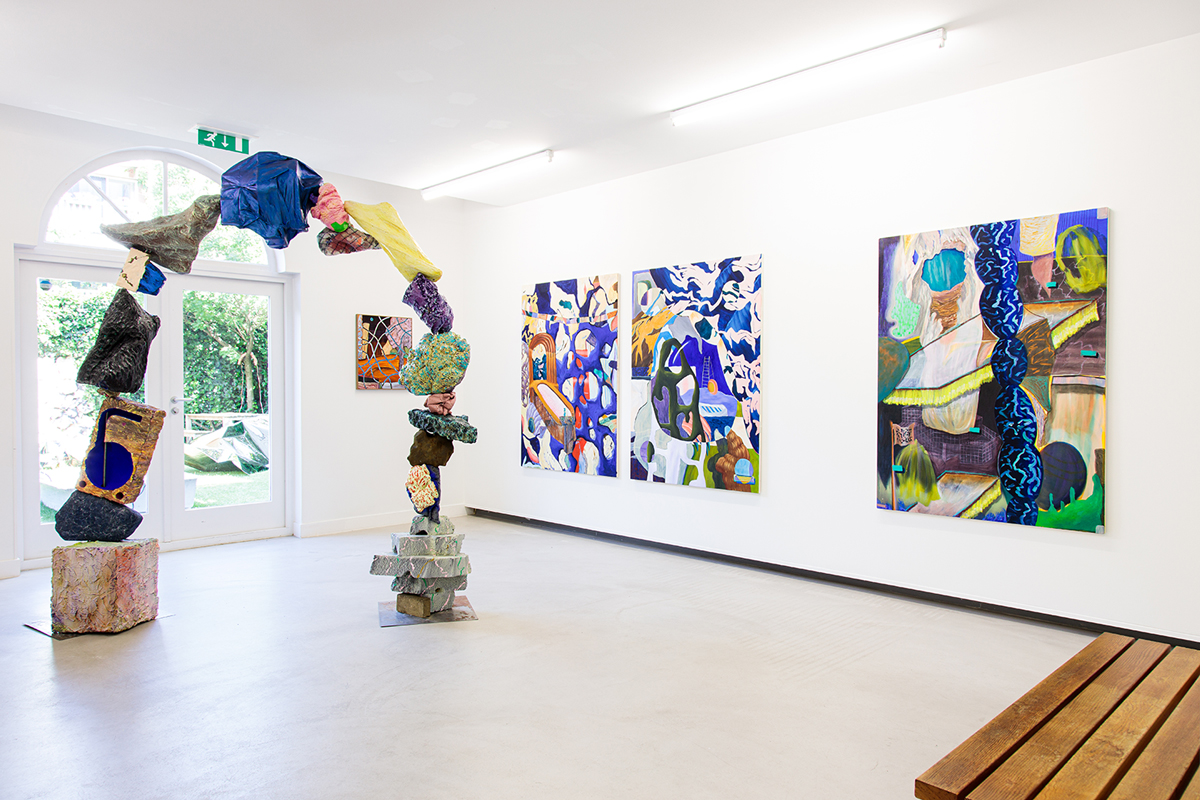10 december 2021, Oscar van Gelderen
The gallery of... Merel de Kok
We’re you exposed to art while growing up?
Creativity was definitely stimulated by my parents. In primary school I was always drawing, building and writing stories. Furthermore, during holidays in France, Spain or Italy, visits to museums were a regular feature. For example, I remember standing in line for two hours at the age of ten in front of the Palazzo degli Uffizi in Florence. I was never bored, there was plenty to see while waiting, but I also remember how impressed I was with the collection when we finally got inside. Botticelli's work in particular made an impression then, and still does today.
How did you come into contact with the art world?
I was lucky enough to attend a high school where there was a lot of emphasis on art subjects. For example, I had visual education and dance in my package. Secretly, I am a bit of an artist myself, but I chose the 'safe way': a bachelor's degree in Cultural Sciences and then a master's degree in Heritage Studies. These studies focussed on curating exhibitions for cultural-historical museums rather than art museums, but contemporary art remained in my life.
I myself was a performer for other artists, such as Sonia Cillari, and I did volunteer work at W139 at the start of my studies in 2007. Initially, that comprised mainly putting stamps on the envelopes for the invitations, but I was lucky that I ended up in the organization when W139 reopened after a thorough renovation.
For example, I suddenly assisted Adriaan Rees with making sculptures that rose from the wall and the ground. I was also selected for the honours programme 'Art and Research', a collaboration between the UvA and the Gerrit Rietveld Academy. Eight university students and eight artists-to-be were paired up for a year to explore where art and science meet and complement each other. The end result was an exhibition in 2009 in the Veemvloer and a publication, both entitled 'Sleep Around More!'.
What was your first job in a gallery? Or did you immediately start a gallery yourself?
In 2013, I was hired as gallery manager at designer Piet Hein Eek in Eindhoven. There he transformed a large old Philips factory into a furniture factory, shop, restaurant, theatre and gallery. The gallery consisted of two floors, where new exhibitions were - literally - created every three to four months. These were major projects, because Piet designed a new wall arrangement for each exhibition. The company already had the materials and expertise in-house, so anything was possible. There I worked with artists such as Bert Teunissen, Linda Nieuwstad, James Cauty, Gerd Rohling, Marc Mulders, Marc Ruyrok and Tokihiro Sato.
I worked there for 2.5 years, but I missed Amsterdam and therefore applied for the vacancy of gallery manager at Galerie Bart. I have been working here for six years now and I am now the gallery’s director. So I am not the owner of the gallery, that is Bart Hoogwegt. He owns two locations: in Nijmegen we have our Expo Bart project space, where artists are invited to create work on site for two months. Collaborations with artists from other disciplines are encouraged. For example, Jochem Rotteveel, one of our artists, collaborated with the fashion designer duo Elliot Collective last fall.
How would you describe your gallery’s profile?
Galerie Bart tries to be a gallery where everyone feels welcome, both young people who are about to buy their first work of art and seasoned collectors. We try to be open and transparent and we consider it our mission to lower the threshold to enter a gallery. We make six to eight exhibitions a year, and ultimately we make them mainly to be seen: a visitor is therefore just as welcome as a buyer. We represent both emerging artists and mid-career artists who have been exhibiting with us for a number of years. We mainly work with artists who have graduated from a Dutch art academy. Galerie Bart will turn twenty next year and a whole bunch of artists, who had just graduated back then, have grown with us. We represent painters, sculptors, draughtsmen, photographers and installation artists. We have a preference for artists who create playful work, where aesthetics and concept are in balance. At first, the work may seem serious, but when you dig deeper, you often come across something humorous.
Gallery Bart is part of a larger organization. As mentioned, our organization consists of two locations: the gallery in Amsterdam and the project space in Nijmegen, on the Honig complex. This project space will close at the end of this year and will reopen in 2022 on NYMA grounds, also in Nijmegen. In the meantime Bart is going to renovate the Honig complex and will open an art and culture house there, where Expo Bart will then move back to. There will also be three other galleries, a theatre, a restaurant, café and an open stage.

Opening Laying Bare, Marleen Sleeuwits, 2019. Marleen and her son, diagonally behind Merel is colleague Simone. Photo by Björn Martens.
What do you think is the best part of being a gallerist?
That this profession is so incredibly versatile. I am everything at once: curator, coach, project manager, relationship manager. One day I'm in the artist's studio getting to know his latest work, the next I meet hundreds of people at an art fair. Both give me a lot of energy.

Opening solos flatFOLDfoil Jochem Rotteveel and Enter the Zone Sjaak Kooij, February 2020. Last normal opening before the pandemic. Photo by Len Land.
Which national / international galleries do you feel an affinity with?
I have since learned that every gallery owner fulfils the profession in his or her own way, and that there is more than one way in which a gallery can be run. Our gallery is different from most galleries in the Netherlands, because there is not one person behind Galerie Bart, but a whole team. That is why I admire gallery owners who dare to give a new twist to the profession. I like to mention No Man's Art Gallery here, they know how to make a bar and a gallery go together perfectly. I would also like to mention Mini Galerie, run by Julia van der Meer. She recently exchanged her gallery on the Kinkerstraat for a showroom in De Hallen. Work by her permanent group of artists can be viewed there by appointment. She opted for a more flexible form of running a gallery, organizing exhibitions in various locations around the country. And finally, I would like to mention Galerie Fleur and Wouter. They are a gallery with a lot of guts, by entering into collaborations with artists who operate on the border between art, design and fashion, but also by showing outsider art.
In an ideal world, which artist would you most like to represent?
Bolivian-American artist Donna Huanca. I am a huge fan of her interdisciplinary approach. Everything comes together in the right way in her work. The way in which her performances, her paintings and sculptures merge is astonishing.
What has changed in the art world since you took your first steps?
Both galleries and collectors are more open to purchasing art online. When I first started working for Galerie Bart, the art sales apps and platforms shot up like mushrooms. Only a handful survived, as it goes. These platforms are increasingly focused on emulating the experience of a physical gallery visit online. This way you suddenly reach a much larger and more international audience. And given the pandemic, there's that word again, that's obviously a godsend. As a gallery it is also very nice to see our website as an extension of our gallery. How can we make that experience the best possible? Also, how can this online experience ensure that people also come to visit our gallery?
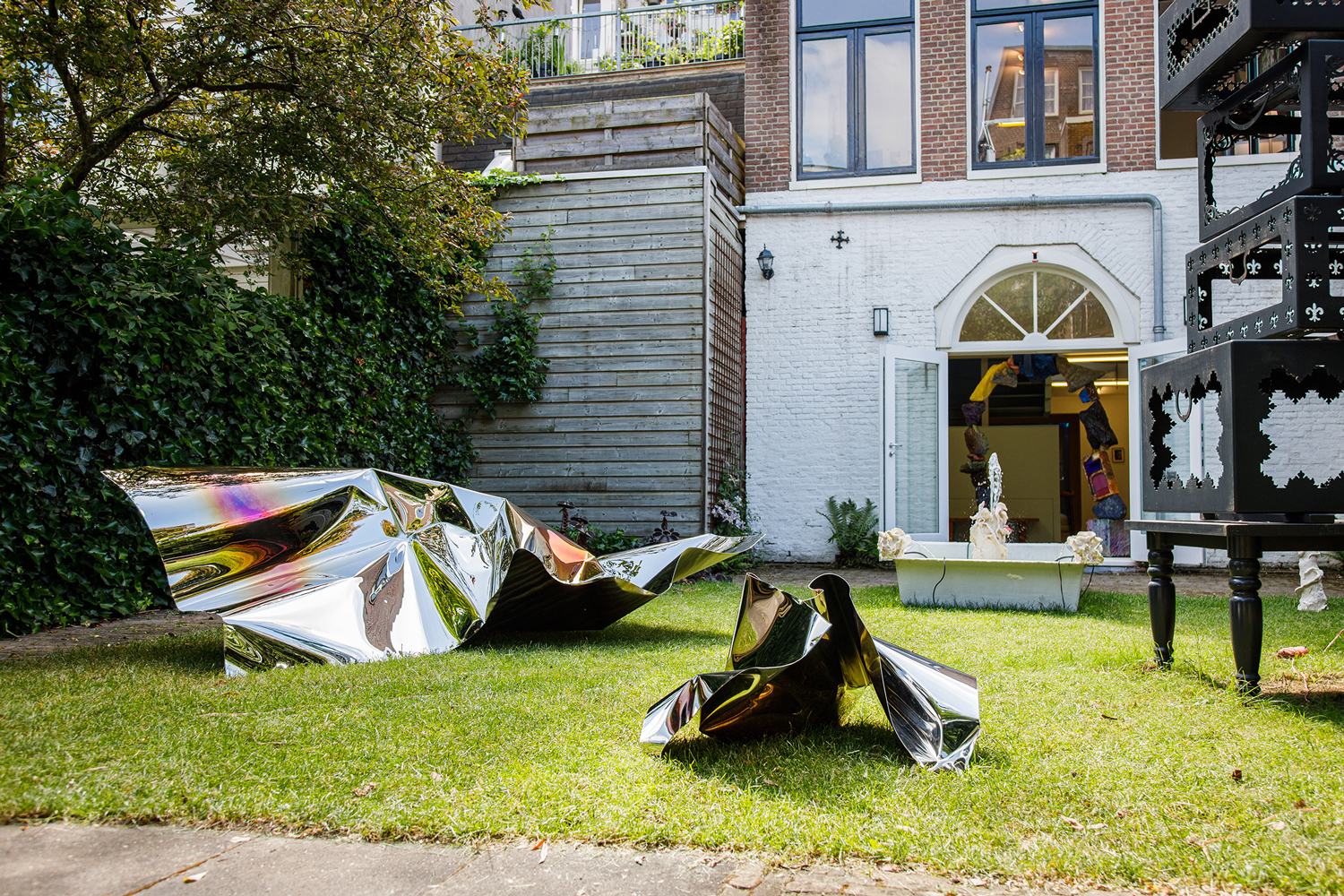
Overflowing Overgrowth Installation shot, Gallery Bart. First garden exhibition 2021. Photo by David Meulenbeld.
What / whose work do you collect yourself?
I call myself a starting collector. Some works have been given to me by artists I have collaborated with, others I have purchased. Various artists hang on the wall at my house, there is not really a line to discover yet. I own work by AdeY, Erik van Lieshout, Anders Scrmn Meisner, Loes Koomen, Marleen Sleeuwits, Marc Mulders, Lola Keyezua, Tibor Dieters, Sanne Maloe Fout, Anne Forest and Elysia Byrd.
Has the pandemic changed the way you see the artworld?
When we had to close our doors during the lockdown, we became even more aware of the important position that galleries occupy within the art world. We are the link between artists, visitors, collectors, curators, art critics, corporate collections and museums. As the gallery world seems closed off to many people, we are now constantly looking for ways to open this up more and prove the opposite. Making our first season of our podcast Uit De Kunst, where we invited various players from the field to sit down with us and talk about their field, is an example of this. Joyce Dunki Jacobs, curator at DELA Kunstzaken, Sheila Verdegaal, gallery manager at Galerie Ron Mandos, and Denise de Boer, project director and quartermaster of the Kunstmuseum Flevoland to be established, sat down with us. I'm looking forward to the second season scheduled for next year.
